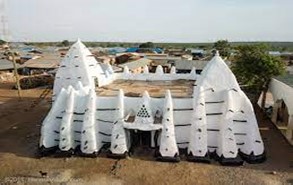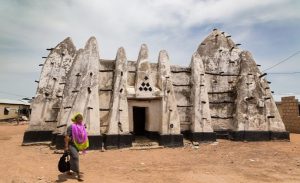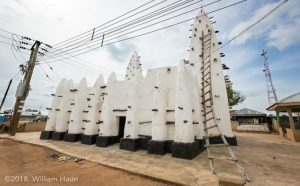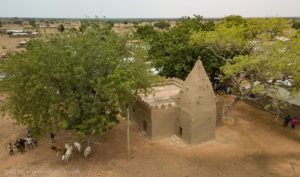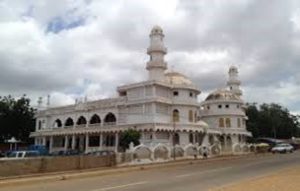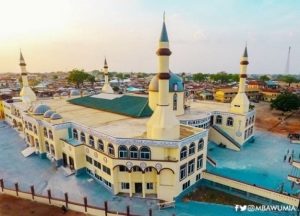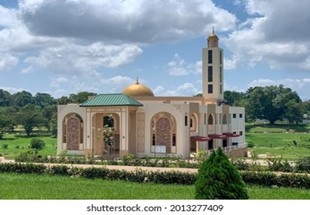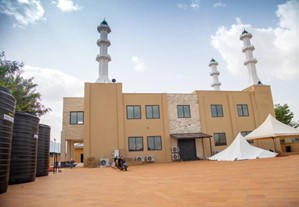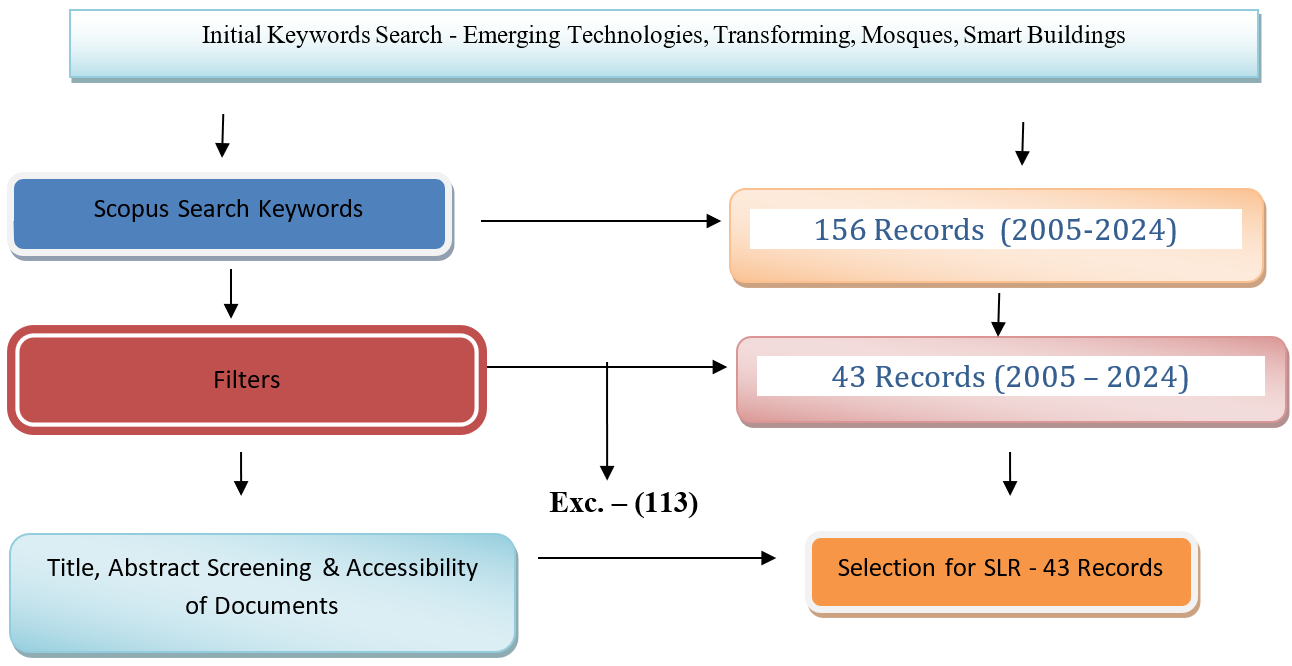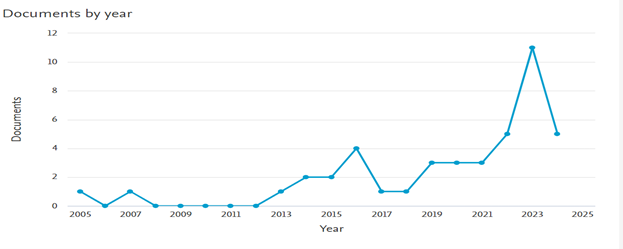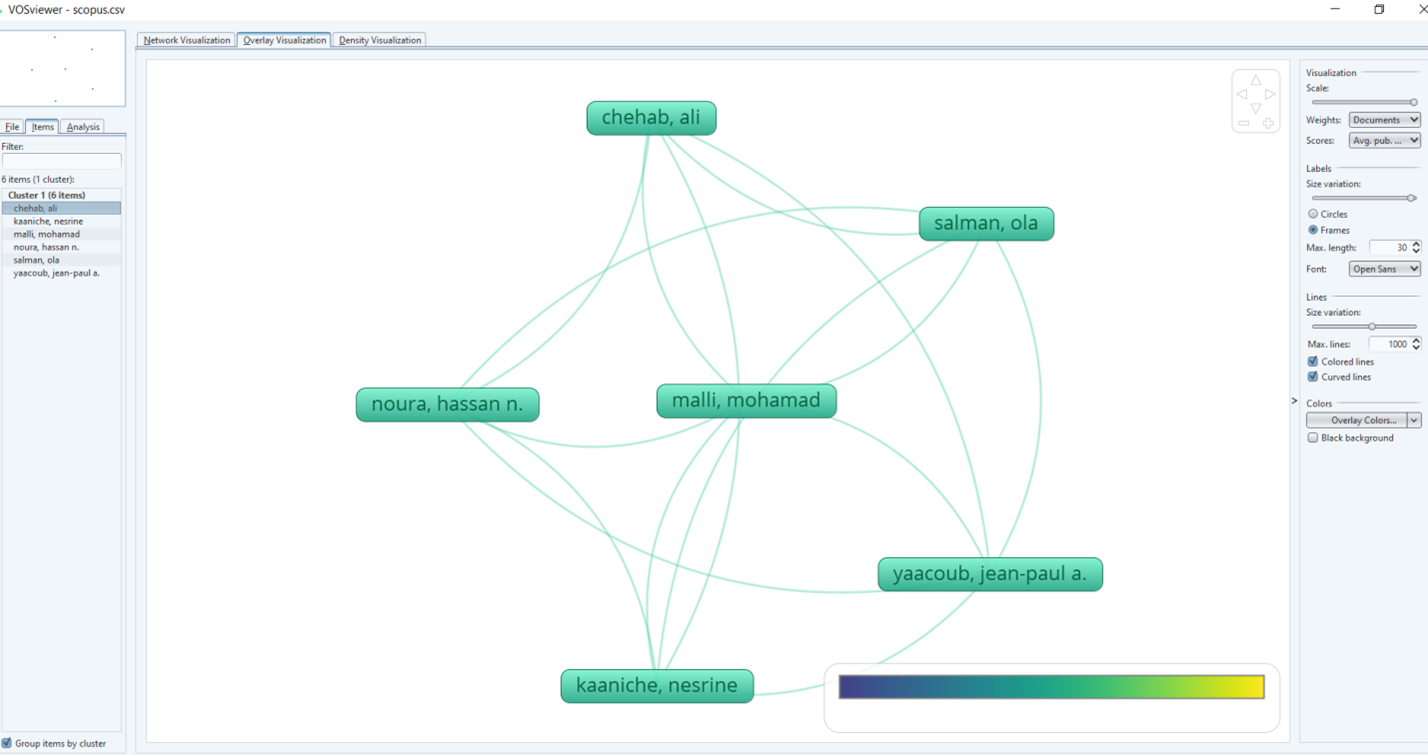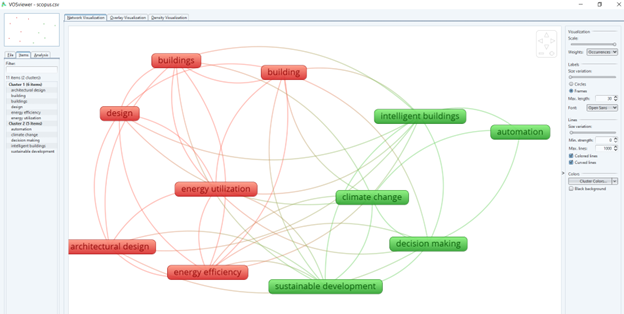Emerging Technologies for Transforming Mosques into Smart Buildings: A Systematic Literature Review
- Mohammed, Abubakar Sadiq
- Dr. Issah Bala Abdulai
- Abbas Jannat
- Dzimale Augustine
- 510-534
- Jul 18, 2024
- Information Technology
Emerging Technologies for Transforming Mosques into Smart Buildings: A Systematic Literature Review
Mohammed, Abubakar Sadiq1, Dr. Issah Bala Abdulai2, Abbas Jannat3, Dzimale Augustine4
1Estate Management Department/ Department of Quantity Surveying and Construction Management, Kibi Presbyterian College of Education and University of the Free State, Bloemfontein, South Africa
2Maths/ICT Department, KIBI Presbyterian College of Education, Ghana
3Department of Estate Management, Kumasi Technical University, Ghana
DOI: https://doi.org/10.51244/IJRSI.2024.1106040
Received: 24 May 2024; Revised: 09 June 2024; Accepted: 14 June 2024; Published: 18 July 2024
ABSTRACT
Purpose – Traditional mosques face inefficiencies in energy use, outdated infrastructure, and inadequate security, all of which lead to high costs and safety concerns. Transforming mosques into smart buildings using emerging technologies can optimize energy consumption, enhance security, improve resource management, promote sustainability and improve user comfort by addressing overcrowding and inadequate facilities. Despite the limited studies on this topic, this systematic literature review aims to explore the current trends in using emerging technologies to transform mosques into smart buildings.
Design/Methodology/Approach – The study used Scopus-indexed literature from 2005 to 2024 to investigate the transformation of mosques into smart buildings using emerging technologies. Based on relevance, quality, recency, geographical focus, and diversity of perspectives, the authors selected 43 records from 156. VOSviewer software provided a quantitative overview of trends, while content analysis offered deeper insights by coding and categorizing themes. This combined approach ensured a comprehensive understanding of current practices and advancements in the field.
Findings – The study found a significant interest in integrating emerging technologies into building architecture and management, particularly focusing on energy efficiency and user comfort. This interest was reflected in the concentration of studies in countries like the United States, the United Kingdom, Italy, China, and Australia. Authors categorized the identified knowledge areas into two main clusters: design and energy-efficient buildings, and technology and intelligent buildings. These clusters represent the dual emphasis on creating energy-efficient structures and incorporating advanced technologies to enhance building intelligence. While the study did not provide specific quantitative results, it highlighted a clear trend towards the adoption of smart building technologies in these key areas, indicating a global shift towards more sustainable and efficient building practices.
Practical Implications – Smart building technologies offer significant benefits to practitioners in architecture, facility management, engineering and others such as religious leadres, community members and policy makers, which optimize lighting, heating, cooling, and ventilation, leading to substantial reductions in energy consumption and operational costs. Intelligent design elements such as smart crowd management systems and personalized environmental controls enhance the user experience and satisfaction. The adoption of sustainable materials and renewable energy sources reduces environmental impact, aligning with global sustainability goals. Automated monitoring and predictive maintenance systems improve operational efficiency, reducing downtime and maintenance costs. And also, smart building technologies enable practitioners to create efficient, sustainable, and user-centric environments, enhancing the quality and performance of buildings such as mosques.
Originality/Value – This study provides valuable insights into the current practices and trends in using emerging technologies to transform mosques into smart buildings. While previous studies have explored various aspects of smart buildings and sustainability in different contexts, there is limited research specifically focusing on the transformation of mosques. This study aims to fill this gap by offering insights into the application of smart technologies in mosque architecture and management, highlighting the benefits and challenges associated with this transformation. Examining Scopus-indexed literature and using VOSviewer software for visualization and analysis, this study contributes to the growing body of knowledge on smart buildings and their potential impact on religious and communal structures.
Keywords – Mosque Architecture, Smart, Buildings, Emerging Technologies, Sustainability, Energy Efficiency.
Paper Type: Literature Review
INTRODUCTION
To reduce uncertainties and streamline tasks, the construction industry must adopt innovative methods (Liu et al., 2019). Digital technologies like the Internet of Things (IoT) (Ghanavati et al., 2017) and blockchain (Qin et al., 2022) can save money and improve reporting speed, reducing communication costs in the construction industry (Perera et al., 2020). The construction sector encompasses a wide range of interdisciplinary technologies and concepts that enable the digitization, automation, and integration of the construction process at different stages (Oesterreich and Teuteberg, 2016). Efforts to cut costs, and boost efficiency, productivity, safety, and sustainability are driving the adoption of new technology in the construction industry (Loosemore, 2014). Construction technologies are defined as new tools, machines, and alterations that help achieve a goal, function, or solve an issue (Sepasgozar and Davis, 2018). Innovations can help the construction sector meet present and future expectations, improving performance and productivity (Duncan et al., 2018). The built environment sector is transitioning from labor-intensive construction to automation using 4IR technologies (Manzoor et al., 2021), which may improve the built environment by quickly automating and digitizing construction. 4IR focuses on AI, robots, IoT, and blockchain (Li et al., 2017; Ebekozien and Aigbavboa, 2021). Blockchain can assist in Building Information Modelling (BIM) in reducing construction legal concerns and enhancing coherence (Turk and Klinc, 2017).
Modern company strategy relies on ICT to boost productivity and socioeconomic growth (Agboola and Tunay, 2023). Corporate systems, visualization, communications, the internet, mobile/smart/android devices, social networking, virtualization, and cloud computing have contributed to this advancement (Underwood and Isikdag, 2011). Emerging technologies simplify procedures and improve capacities in the construction industry, encouraging innovation and transformation (Kissi et al., 2023). Building Information Modelling (BIM) has revolutionized construction efficiency and productivity (Kissi et al., 2023). BIM helps stakeholders collaborate and share information, improving project delivery (Acquah et al., 2018). Another developing technology that benefits the construction sector is cloud computing, which improves cooperation, flexibility, and cost (Kissi et al., 2023). It helps construction companies collaborate and integrate construction management, improving productivity and reducing environmental effects (Kissi et al., 2023).
The Convention for the Safeguarding of Intangible Cultural Heritage (Suárez et al., 2018) emphasizes cultural heritage preservation. This norm has inspired immersive visualization and 3D reconstruction of ancient sites using varied computer technologies, first concentrating on the visual element (Suárez et al., 2018). Researchers have used simulations to examine acoustics and illumination (Suárez et al., 2018). Mixed methods, such as virtual reality, enhance sensory experiences and virtualize sound, an intangible cultural resource (Suárez et al., 2018). Recently, IT and AI have improved construction methods, turning conventional buildings into smart ones (Konbr and Abdelaal, 2022). These advances simplify smart building construction by improving resource and energy management (Babushkina et al., 2017). AI and sensor-enabled smart buildings can boost production, reduce resource depletion, and promote sustainable urbanization (Aduda et al., 2016).
Studies Suárez et al. (2018), Abdallah (2023), Marzouk et al., (2023), Elshurafa et al., (2019), As-Salafiyah et al. (2022), Fahmi and Qulub (2020), Muin et al., (2024), Al-Khalifa (2019), and Yusarelan et al., (2020)) help explain mosque design and management. The discussion includes topics such as acoustic reconstruction, energy efficiency, retrofitting, solar panels, empowerment index, asset management, and sustainable facilities management. Despite these advances, Facilities Management (FM) research has mostly concentrated on commercial entities, ignoring mosques’ concerns (Muin, 2017). FM is vital to non-profit organizations like mosques, which have unique operating needs (Kamaruzzaman et al., 2018). Modern energy-efficient buildings are tackling global sustainability challenges through the use of innovative construction materials, green energy sources, energy-efficient storage solutions, and intelligent management systems. This approach encompasses all forms of development undertaken on land (Moletsane et al., 2018; Mohammed et al., 2023). El Fouih et al., ( 2020) evaluated two medieval mosques in Marrakech, Morocco, and advised energy-saving solutions. To conserve energy, Abdullah et al. (2017) examined different design solutions for large mosque building enclosures in Saudi Arabia, combining efficient electrical equipment with building energy technologies like insulation, ventilation, and solar energy.
Muslim societies rely on mosques for solidarity and architectural inspiration (Ghouchani et al., 2019). They also host social, economic, and educational activities, as well as worship (As-Salafiyah et al., 2022). Mosques have intermittent usage, special functional requirements, and needs for thermal and visual comfort, tranquility, and calmness (Marzouk et al., 2023). In 2019, 3.85 million mosques existed, with 25% of the world’s population Muslim (Azmi and Kandar, 2019). Rapid urbanization and population growth are straining mosque infrastructure and resources. Smart technologies could boost energy efficiency, sustainability, and space optimization. Traditional mosque designs and different architectural styles present unique challenges for integrating modern technology. While emerging technologies have transformed various aspects of construction, there’s a gap in understanding how these technologies can be applied to mosques. Despite the importance of mosques in communities and their unique architectural and functional requirements, there’s limited research on how emerging technologies can make them smart buildings.
The specific objectives of this study are to understand the publication trend, co – authors and institutions on the topic of emerging technologies and smart buildings. To address these objectives, a systematic review was employed, analyzing publications that influenced the discourse surrounding emerging technologies and the transformation of mosques into smart buildings. Clusters of publications that are thematically related were mapped. Content analyses were used to examine significant contributions, supplemented by articles discovered through citation and manual searches. The study aims to provide empirical evidence regarding the transformation of mosques into smart buildings through the application of emerging technologies. The remaining sections of the paper presents a review of the literature, the methods used in conducting the study, the findings, and the conclusions drawn from both phases of the research.
LITERATURE REVIEW
Smart Building Technologies
Operational automation and intelligent space management improve user experience, productivity, cost efficiency, and cyber security in smart buildings (Wellener et al., 2018). Technological advances have made these buildings more efficient, versatile, interactive, and sustainable (Ghansah and Lu, 2024). Smart buildings require sensor deployment, big data engineering, cloud computing, and fog computing (Jia et al., 2019). As technology advances, smart buildings are becoming “intelligent buildings” and “cognitive buildings” (Ghansah et al., 2022b).
Communication technologies facilitate the communication, interaction, monitoring, and control of smart building items, sensors, and functions to communicate, interact, monitor, and control (Abdallah, 2023). Smart sensors control ventilation, air conditioning, window and door openings, and energy usage by monitoring indoor and outdoor temperature, humidity, light intensity, ventilation, and energy consumption (Benavente-Peces, 2019). A study replaced lighting systems with LEDs, installed solar PV panels on rooftops, and used transparent double glass to let sunlight in while blocking thermal energy to improve energy efficiency in Egyptian mosques (Abdullah and El-Shennawy, 2017).
The industrial revolutions have shaped modern growth, especially in construction and technology (Alaloul et al., 2020). Technology has transformed industries by replacing manual labor and integrating technology with human interaction, from the mechanical looms of the 1700s to the Digital Revolution of Industry 4.0 (Qin et al., 2016). Cyber-physical systems (CPS) are important achievements of Industry 4.0, linking the virtual and physical worlds, simplifying construction data gathering and reporting, and lowering risks (Correa, 2018).
RFID and IoT help track materials and equipment, communicate between construction project components, and improve monitoring and control, reducing risks and improving efficiency (Rivera et al., 2021). VR and AR give stakeholders immersive 3D visualization experiences, improving quality control, safety regulations, logistics, and project scheduling (Osunsanmi et al., 2020). Cloud computing streamlines data and resource access for smart building stakeholders, improving project efficiency (Alwashah et al., 2024).
CPS, RFID, IoT, VR, AR, and cloud computing can transform mosques and other buildings into smart buildings with improved management systems, safety protocols, and immersive stakeholder experiences (DeNardis, 2020). Smart mosques adjust temperature, illumination, and air quality during prayer times to maximize comfort, tranquility, and quiet (Smart Group, 2020). These advances increase mosque facilities and advance countries’ technology (Abdallah, 2023). The Masdar Institute has developed sensor technologies to make mosques smarter and more energy-efficient, particularly air conditioning systems, reducing energy use and carbon footprints (Abdallah, 2023). Smart building technologies use the Internet of Things (IoT) to create a Cyber-Physical System (CPS) or Digital Twin with more durable, smart, adaptable, and cost-effective sensors, actuators, and controllers (US Dept Energy, 2020).
Facilities Management Practices of Mosques
Saudi Arabia’s vision 2030 emphasizes “effective governance,” so the “Qawam” program streamlines government agency spending, including mosques overseen by the Ministry of Islamic Affairs, which are vital community institutions (Alder and Aqsa, 2022). The poll revealed widespread dissatisfaction with mosque performance, particularly maintenance. According to Alder and Aqsa (2022), mosques typically perform intervention maintenance after identifying damage, but there is no ongoing condition monitoring. Only 21% of mosques have annual maintenance contracts due to budget constraints (Ministry of Islamic Affairs, 2017). Mohammed et al., (2023) identified several challenges in the implementation of effective FM / maintenance practices including neglect and financial limitations, shortages in human resources. Facility management must monitor and maintain mosque comfort due to its regular use for prayer (Gerrish et al., 2017).
Logic-based asset management lets people and businesses track and protect valuable assets (Alder and Aqsa, 2022). Islamic Sharia requires mosque asset management to consider economic and religious concerns (Supardi, 2011). To achieve organizational goals, effective management plans organize, implement, and control efficiently and effectively (Fahmi and Qulub, 2020). The mosque optimizes its assets to cover costs and achieve its aims (Fahmi and Qulub, 2020).
Mosques contain four main rooms: the prayer hall, wet area (ablution and bathrooms), yard, and minaret (Alder and Aqsa, 2022). Buildings decay; hence, architects, engineers, and builders talk about “building performance” (de Wilde, 2019). Quantitative and pricing infrastructure asset management plans can optimize intervention by quantifying and pricing asset demands (Alder and Aqsa, 2022). Traditionally, we use the inspector’s knowledge to optimize without conducting sufficient performance assessment to accurately represent current functionality and serviceability (Brambilla et al., 2021).
Sustainable Facilities Management (SFM) incorporates sustainable practices into mosque administration and operations (Muin et al., 2024). SFM in mosques reduces utility, maintenance, and waste disposal expenses while promoting Islamic stewardship and environmental responsibility (Kamaruzzaman et al., 2017). SFM’s clean, comfortable environment and Islamic preservation teachings boost mosque goers’ well-being socially (Hasim et al., 2021). SFM can develop accessible, environmentally conscious, and Islamically stewarding multipurpose community one-stop centers. SFM implementation requires strategic decisions based on how facilities may assist the mosque in achieving its goals (Bakri et al., 2018). Mosques need good facility management to stay attractive and functioning. Emerging technology can improve asset management, condition monitoring, and sustainability, helping mosques become smart structures.
Technology Adoption and Implementation
Smart buildings optimize resource management and building performance by integrating HVAC, power, lighting, security, safety, and shared networks (Hamida et al., 2022). Technology creates a dynamic infrastructure that optimizes energy, flexibility, affordability, and comfort in buildings (Hamida et al., 2022). They engage with the ecosystem using sensors, communication networks, and programmable equipment to reduce energy use and improve comfort and well-being (Pramanik, 2019). Flexible smart buildings generate and store energy for lifestyle and sustainability (Sánchez-Corcuera et al., 2019).
Technology adoption is poor in developing nations, despite its benefits. Due to technical incompetence and weak institutions (Donbesuur et al., 2020), AR and VR have the potential to improve construction performance but face opposition (Okpala et al., 2020). Feasibility studies, hardware expenses, and client apathy, especially in underdeveloped countries, hinder technology adoption (Abdelmegid et al., 2020). Successful technology integration in religious buildings and cultural heritage sites requires an understanding of management-level worker acceptance (Darko et al., 2018).
Building Information Modelling (BIM) has been popular globally due to its speed, quality, and cost savings (Adekunle et al., 2021). South America, the UK, and others have strong adoption rates (Adekunle et al., 2021). The UK led Europe by mandating BIM for public sector projects in 2016 (Jiang et al., 2022). European, Japanese, and Australian adoption has increased (Al Hammoud, 2021). The Middle East and Africa are beginning to adopt (Safour et al., 2021). Architecture experts in Karachi use BIM more (Girginkaya et al., 2020).
The modern mosque evolved from numerous cultures’ inspirations, influences, and inventions (Salah et al., 2020). The mosque can accommodate future architectural design components (Ching, 2023). In the Gulf and Africa, where buildings endure heat for most of the year, low-carbon mosques hold significant importance (Alotaibi and Ansari, 2023). However, regional implementation of these techniques is unsatisfactory and falls short of international results. Mosques can become smarter by adopting new technology to improve resource management, building performance, and the user experience. Successful implementation in mosques requires overcoming adoption barriers and stakeholder approval.
Types of Mosques in Ghana – West Africa
In Ghana, mosques can be categorized into central mosques, community mosques, rural mosques, and historic mosques. Central mosques, such as the Kumasi Central Mosque and the Accra Central Mosque, are large and serve as central hubs for Muslim communities. Community mosques are smaller and situated within local communities, catering to residents’ daily prayer needs. Rural mosques are simple in design, and they serve the local Muslim population in rural areas. Historic mosques, like the Larabanga Mosque and the Banda Nkwanta Mosque, are of cultural and historical significance, often featuring unique architectural styles. Modern mosques in Ghana blend traditional elements with modern designs and amenities, reflecting a trend towards urbanization and modernization. Some mosques also serve as educational centers, providing Islamic teachings. Transforming mosques into smart buildings involves integrating technologies like sensors, big data engineering, cloud, and fog computing. These technologies automate systems like lighting and HVAC, optimize energy usage, and enhance the worship experience. Below are images of some ancient and contemporary mosques.
Larabanga Mosque – Savanna Region
Source: William, (2018)
Bole Mosque – Savanna Region
Source: Wikipedia
Banda Nkwanta – Savannah Region
Source: William, (2018)
Wuriyanga –Upper East Region
Source: William, (2018)
Tamale Central Mosque – Northern
Source: Dailyguide Network, (2023)
Ahmadiyya Central Mosque – Northern
Source: Ahmadiyya Mosque in Tamale. (2016)
Source: Ghana in Times, (2023)
Source: Shutterstock
University of Sci. & Tech– Ashanti Region
Source: Shutterstock
Gbanyamni – Northern Region
Source: Myjoyonline, (2022)
METHODS
Search Strategy
A comprehensive advanced search using titles, abstracts, and keywords was conducted. We chose Scopus above Web of Science, Science Direct, and Google Scholar to uncover Emerging Technologies for Transforming Mosques into Smart Buildings literature. Unlike them, Scopus has a larger variety of scientific papers and efficient indexing (Owojori and Okoro, 2022). The period encompassed all years to prevent the omission of important papers. The “Advanced Search” tool creates queries using field tags, keywords, boolean operators (OR, AND), and brackets. The AND operator joins phrases from different sets, while OR links terms from the same collection. A comprehensive search approach follows: ( ( ( “Emerging Technologies” OR “Novel Technologies” OR “Advanced Technologies” OR “Cutting-Edge Technologies” OR “Up-and-Coming Technologies” OR “Next-Generation Technologies” OR “Innovative Technologies” OR “Modern Technologies” OR “State-of-the-Art Technologies” OR “Breakthrough Technologies” OR “Pioneering Technologies” OR “Sensor Deployment” OR “Big Data Engineering” OR “Cloud Computing” OR “Internet of Things” OR “Smart Lighting” OR “Smart HVAC Systems” OR “Security Systems” OR “Energy Management Systems” OR “Digital Signage” OR “Mobile Apps” OR “Audio-Visual Systems” OR “Augmented Reality” OR “Virtual Reality” OR “Mixed Reality” OR “Blockchain Technology” OR “Artificial Intelligence” OR “Robotics” OR “Drones” OR “Computer Aided Facilities Management” OR “Geographies Information Systems” OR “Energy Harvesting Technologies” OR “Digital Twin” OR “Fog Computing” OR “Smart Waste Management Systems” OR “Water Management Systems” OR “Biometric Systems” OR “Smart Parking Systems” OR “Smart Furniture” OR “Voice Control Systems” OR “Smart Grid Technologies” OR “3D Printing” OR “Smart Glass” OR “Smart Mirrors” OR “Nanotechnology” OR “Gesture Control Systems” OR “Smart Vending Machines” OR “Smart Plugs and Outlets” OR “Information and Communication Technology” OR “Building Information Modeling” OR “Big Data Analytics” OR “Protech” OR “Advanced” OR “Hi-Tech” OR “Machine Learning” OR “Automation” OR ” Building Automated Systems” OR “Industry 4.0” OR “4IR” OR “Industrial Resolution” OR “Predictive Maintenance” AND “For” AND “Transforming” OR “Revolutionizing” OR “Changing” OR “Converting” OR “Metamorphosing” OR “Transmuting” OR “Evolving” OR “Transfiguring” OR “Shifting” OR “Altering” OR “Modifying” OR “Transmogrifying” AND “Mosque Modernization” OR “Mosque Transformation” OR “Smart Mosque” OR “Intelligent Mosque” OR “Technological Enhancement of Mosques” OR “Mosques” OR “Masjids” OR “Islamic Centers” OR “Sacred Mosques” OR “Religious Centers” OR “Religious Buildings” OR “Cathedral” OR “Temples” OR “Churches” AND “Into” AND “Smart Buildings” OR “Intelligent Buildings” OR “Automated Buildings” OR “Building Technology” ) ) ) AND ( LIMIT-TO ( LANGUAGE , “English” ) ) AND ( LIMIT-TO ( PUBSTAGE , “final” ) ) AND ( LIMIT-TO ( DOCTYPE , “ar” ) OR LIMIT-TO ( DOCTYPE , “re” ) OR LIMIT-TO ( DOCTYPE , “cp” ) OR LIMIT-TO ( DOCTYPE , “ch” ) ) AND ( LIMIT-TO ( SUBJAREA , “ENGI” ) OR LIMIT-TO ( SUBJAREA , “COMP” ) OR LIMIT-TO ( SUBJAREA , “ENVI” ) OR LIMIT-TO ( SUBJAREA , “ENER” ) OR LIMIT-TO ( SUBJAREA , “SOCI” ) OR LIMIT-TO ( SUBJAREA , “ARTS” ) ) AND ( LIMIT-TO ( EXACTKEYWORD , “Energy Efficiency” ) OR LIMIT-TO ( EXACTKEYWORD , “Buildings” ) OR LIMIT-TO ( EXACTKEYWORD , “Intelligent Buildings” ) OR LIMIT-TO ( EXACTKEYWORD , “Energy Utilization” ) OR LIMIT-TO ( EXACTKEYWORD , “Architectural Design” ) OR LIMIT-TO ( EXACTKEYWORD , “Sustainable Development” ) OR LIMIT-TO ( EXACTKEYWORD , “Climate Change” ) )
Article Screening
Our collection included 156 documents from 2005 to 2024. Search filters were used to find the latest and most relevant articles. Inclusion and exclusion criteria focus on 2005 and later publications that introduced the topic. This provided the latest evidence and perspectives regarding the trajectory of knowledge over the past nineteen years. We added the current year for context. Articles, conference papers, reviews, and book chapters were used to assess the field’s direction and maturity according to the approved technique (Okoro, 2023). We did not impose any restrictions on the accessibility, country of origin, or funding of the documents. English-language and final publications were included. A title and abstract screening excluded 113 documents not related to developing technologies, smart buildings, or mosques.
Tools for Analysis
Data visualization tools like VOSviewer, Cite-Space, Rstudio, and Bib-Excel are available (Cobo et al. 2011). This study used VOSviewer to analyze the source data. Due to its ease of use, construction literature reviews use VOSviewer to build and visualize bibliometric charts (Owojori et al., 2021). It clarifies bibliometric system presentation (Owojori et al., 2021). VOSviewer is easier to use than similar software and can map and normalize networks (Owojori et al., 2021). We exported the text data sample to Excel as a CSV file for cleaning and managing graphs and charts. We loaded the clean data into VOSviewer for mapping and visualization. Networks of citations, co-citations, co-authorships, and keywords were created using abstracts, titles, and keywords of documents, sources, cited sources, nations, and phrases (Sajovic and Podgornik, 2022).
Visualization
We used the popular literature review and analysis software VOSviewer. Unlike Chandler (2015), VOSviewer used text-mining and unified clustering to visualize and analyze scientific articles, researchers, organizations, countries, and keywords. Okoro (2023) examined keyword co-occurrence, co-citation, and co-authorship among authors, sources, and organizations. In this network, strong nodes and links indicate co-authorship (Van Eck and Waltman, 2021). Total link strength (TLS) shows an item’s researchers, countries, and organization relationships (Yu et al., 2020). Also assessed was density (node ties, clustering, and relativity) (Okoro, 2023). Keyword co-occurrence and cluster analysis assessed research trends in the same papers (Li et al., 2019). Co-occurrence network analysis uses mixed clustering and network mapping for keyword selection and data mining (Okoro, 2023). Clustering guides the investigation by identifying gaps, important findings, and keyword ranking (Liu et al., 2018). As distance reduces, nodes link (Van Eck and Waltman, 2014). Methods of Search in Figure 1, adopted:
Figure 1 Search Technique Adopted: Author’s Construction
Content Analysis
We used content analysis to examine the most influential research in selected books. Textual data are concluded by content analysis (Elango and Kumaravel, 2022). The study conducted a comprehensive literature review and established consensus concepts. This phase addressed study themes. The most cited papers may favor older works with fewer citations, but they are key nodes in the dissemination and scientific information network and reveal opinions over time (Ioannidis et al., 2014). Okoro (2023) adopted similar approaches. Okoro (2023) used sampling (setting criteria and discovering the ten most referenced papers), coding (reading and rereading selected documents and grouping common themes), and quantitative or subjective attribute description. The discussion incorporated both phases’ findings.
RESULTS AND DISCUSSION
This section contains a presentation of the results. The literature review analysis involved the tabulation and graphical representation of publication characteristics, such as the yearly trend, sources of authors, funders, affiliations, and keywords (Fan et al., 2020). We disclose the most frequently co-cited documents after conducting a content analysis. We considered the implications of the results, emphasized the study’s limitations, and proposed further investigations. The analysis is delineated as follows:
Publication Trend
To analyze the publication trends for emerging technologies for transforming mosques into smart buildings in Figure 2 below, researchers visualized the data to identify patterns and potential implications. The years 2005, 2007, 2013, 2017, and 2018 exhibit very low publication activity, with only (1) publication per year. Publication activity slightly increased in 2014 and 2015, with (2) publications per year. The years 2019 to 2021 show a significant increase in publication activity, with (3) publications per year. This suggests a growing recognition of the importance of smart building technologies, as well as the maturation of research in this area. The year 2023 stands out with (11) publications, indicating a peak in interest and research output. The years 2022 and 2024 show a consolidation of research activity, with (5) publications each. This could indicate a stabilization of the research field, with researchers building upon previous findings and exploring more advanced topics. The analysis suggests a gradual but steady growth in research interest and output in the field of emerging technologies for transforming mosques into smart buildings. The research landscape is dynamic and evolving, with the potential for further advancements and innovations in the future, following a peak in 2023 and a subsequent consolidation phase.
Figure 2: Annual Scientific Publication
Document Type and Sources
Out of the 43 documents analyzed, the majority were journal articles (22), followed by reviews (11), book chapters (7), and conference papers (3), which also served as significant sources of information dissemination. Researchers included reviews, conference papers, and book chapters because they contributed to presenting research ideas and trends related to the topic. Figure 3 below displays the documents type for the study.
Figure 3: Documents Type
The documents’ sources underwent further analysis using bibliographic coupling to determine the number of pairs of cited references in documents that share the same match key (Van Eck and Waltman, 2021). Only 4 of the 37 sources satisfied the set threshold of two documents and zero citations per source. These sources included Energies (3 documents, 24 citations, TLS 8), Energy and Buildings (3 documents, 15 citations, TLS 2), Applied Energy (2 documents, 226 citations, TLS 3), and Automation in Construction (2 documents, 22 citations, TLS 3). Energies had a TLS value of 8.0, indicating a high level of cross-referencing with another journal, whereas the other sources had fewer links on the topic.
Geographical Distribution of the Study
Figure 4 shows the global publishing distribution by country. These geographical perspectives demonstrate the spatial distribution and interconnections of countries in scientific publications. This diversity in location and connectivity shows each country’s contribution and research interest. It appears that researchers from several countries have contributed to this field over the given period of time. Five of the 31 countries studied have at least five documents per country. These countries are the US (10 documents, 889 citations), UK (9 documents, 605), Italy (8 documents, 46), China (6 documents, 471), and Australia (6 documents, 539). Zero TLS (Total Link Strength) indicates no international collaboration. In this field, there are few African studies.
Figure 4: Geographic Distribution
Authors and Organizations
An analysis of the writers’ publications and citations showed their field’s importance. We selected the top six writers out of 183: Ali Chehab, Nesrine Kaaniche, Mohamad Malli, Hassan N. Noura, Ola Salman, and Jean-Paul A. Yaacoub, with TLSs of 5 and at least one document and 25 citations apiece. Figure 5 shows links between all six authors.The top five organizations with at least one document and 25 citations, out of 135 analyzed, were City University of Hong Kong, Shenzhen Research Institute, Shenzhen, China (1 document, 4 TLS); Division of Building Science and Technology, City University of Hong Kong, Kowloon, Hong Kong (1 document, 4 TLS); Guangdong Provincial Key Laboratory of Science and Intelligent Emergency Technology (1 document, 4 TLS); and School Highest TLS was 4.0, and network visualizations showed few linkages between these organizations. Network visualizations revealed certain interlinkages that were not known to researchers or organizations. Industry cooperation is essential for technology uptake.
Figure 5: Prominent Authors
Keywords Cluster
To better reflect their research, the authors used VOSviewer to find the most common keywords that represented the issues under examination (Leong et al., 2021). To produce a keyword co-occurrence network graph to show popular themes (Fan et al., 2020). All author keywords were analyzed. The software used normalization of relationships and a comprehensive counting approach to calculate keyword co-occurrence link strength. Figure 6 shows two clusters of 11 terms from 511. The figure 6 shows the top keywords and their links.
Cluster 1 – (6 items, RED) – Architectural Design, Building, Buildings, Design, Energy Efficiency and Energy Utilization.
Cluster 2 – (5 Items, Green) – Automation, Climate Change, Decision-Making, Intelligent Building and Sustainable Development.
Figure 6: Network of Keywords
Content Analysis
Content analysis improves qualitative synthesis. We examined the methodology and focus of the top ten most-cited works. We classified these works using the themes from the review phase to gain a deeper understanding of the author’s opinions and conclusions. Experts view technology as a crucial component of smart buildings. The most cited technologies in emerging technologies were IoT, smart tools (data sensors and devices), AR, CAFM, blockchain, BIM, industry foundation classes (IFC) data models, green building technology (photovoltaic-LED lighting system), AI applications, digital twins, digitalization and IT, indoor positioning systems, and cloud environments and systems. Briefly describing the results:
Discussion of Findings
Cluster 1 – Design and Energy-Efficient Buildings
Studies in this cluster focus on enhancing user comfort and pleasure in building design. For instance, Ali and Mustafa (2023) emphasise the importance of visual and cognitive harmony in mosques, particularly in prayer halls. They highlight how mosques offer a unique architectural features where users perceive the environment from a single vantage point, allowing for a comprehensive approach to environmental research, including aspects like daylight and glare. The design and orientation of buildings play a crucial role in their energy efficiency and environmental impact. For example, Younger et al. (2008) highlight how buildings can accelerate climate change depending on factors such as location, landscape, energy consumption, and material composition. Addressing these impacts requires better architectural and urban design, as well as energy- and water-efficient communities and structures (Sijakovic and Peric, 2021). Sustainable architecture aims to optimise resources and materials, reduce energy consumption, promote renewable energy, minimise waste and emissions, and improve functionality and occupant quality of life (Sijakovic and Peric, 2021).
Cluster 2 – Technology and Intelligent Buildings
In this cluster, the focus is on smart buildings that integrate Industry 4.0 technologies to save energy and improve user comfort. Balta-Ozkan et al. (2014) define smart buildings as homes with communication networks that connect sensors, appliances, and devices for remote monitoring and control, as well as provide occupants with a variety of services. These buildings require smart materials and sensors for automation and intelligence (Gilder and Clements-Croome, 2010). Intelligent Design (ID) theory suggests that intelligent causes explain some aspects of the universe better than natural selection (Witt, 2007). Engineering innovations have made buildings more human-sensitive and responsive, resembling living entities that safeguard their occupants (Gilder and Clements-Croome, 2010). Research has combined sustainable and smart building concepts to address efficiency, productivity, and functionality needs (Das, 2012). Smart buildings may modify internal and external surroundings for tenant comfort and benefit without human involvement, saving money and energy (Hume, 2013). These buildings use automated controls to save energy and optimize operations (Indrawati et al., 2017). Both clusters contribute to the understanding of building design and energy efficiency, with Cluster 1 focusing on architectural principles and sustainable practices, while Cluster 2 explores the application of technology and automation in creating smart buildings wihich is applicable in mosque transformation.
Critical Evaluation
While the literature reviewed provides comprehensive understanding into the integration of emerging technologies in building design and management, there are some limitations to consider. The studies focus primarily on theoretical concepts and case studies, with limited empirical evidence on the actual implementation and impact of these technologies in real-world settings. Additionally, there is a lack of standardization in terminologies and methodologies, making it challenging to compare and generalize findings across studies. Future research should focus on empirical studies that assess the effectiveness and feasibility of these technologies in different contexts. Moreover, there is a need for interdisciplinary research that combines engineering, architecture, and social sciences to develop holistic solutions for sustainable and smart buildings. Finally, the literature review highlighs the potential advantages of incorporating emerging technologies into religious buildings; additional research is necessary to tackle the practical obstacles and guarantee their successful application in real-world scenarios.
DISCUSSION
Summary of Findings
The study came out with numerous findings. The field has seen a gradual but continuous increase in research interest and production. Researchers from the US, UK, Italy, China, and Australia have primarily studied this field. International cooperation is needed because there was no collaboration with other countries. African countries need more research due to Scopus’s lack of indexed material. Sim (2022) asserts that building innovative workplaces that adapt to economic, social, technical, and organizational change requires transdisciplinary research.For instamces, in mosques and smart buildings, transdisciplinary techniques can enhance architectural design and energy efficiency innovations. This approach combines insights from architecture, engineering, social sciences, and environmental studies to address complex challenges as well as religious dilemmas which helps meet the diverse needs of worshippers while ensuring energy efficiency and sustainability. Professionals in sociology, psychology, and architecture can assist researchers in understanding the social and cultural dynamics of mosques, enabling the creation of inclusive and comfortable spaces for all worshippers. Furthermore, researchers can employ environmental science and engineering to create energy-efficient lighting, heating, and ventilation systems, thereby mitigating the environmental impact of mosques.
Moreover, these approaches can be used to integrate cutting-edge technologies and sustainable practices in the context of smart buildings. By collaborating with experts in IoT, AI, and architecture, researchers can develop smart systems that optimise energy usage based on real-time data and user behavior. Also, working with professionals in renewable energy and materials science can lead to the development of sustainable and efficient smart building materials and technologies. Finally, transdisciplinary techniques enable researchers to address complex problems and design sustainable, user-centred environments such as mosques and smart buildings.
The survey also recognized leading authors and organizations in intelligent building design and energy-efficient building. However, there is little research on developing technology for smart mosques. The lack of research on developing technology for smart mosques is a significant gap with important implications. This gap hinders the progress of mosque modernization efforts, preventing them from fully benefiting from technological advancements. Smart technologies could greatly enhance mosques’ functionality, efficiency, and user experience, but without research in this area, mosques continue to rely on traditional systems that may be inefficient and outdated. Filling this gap could lead to several potential benefits. It could improve energy efficiency and sustainability in mosques, aligning them with global efforts to reduce carbon footprints. Again, smart technologies could optimise energy usage, reduce waste, and integrate renewable energy sources, making mosques more environmentally friendly. Moreover, developing technology for smart mosques could enhance the user experience and inclusivity. To add to that, smart systems could provide better facilities for women and people with disabilities, improve crowd management during peak times, and enhance overall comfort for worshippers. There could be several reasons for the limited research in this area. Mosques are traditionally conservative institutions, and there may be resistance to change or adoption of new technologies. Funding constraints could also be a barrier, as developing and implementing smart technologies can be costly. Additionally, there may be a lack of awareness or expertise in integrating modern technologies into mosque design and management. Furthermore, addressing these barriers would require collaboration between researchers, mosque management, and technology developers, which would be critical to understanding mosques’ specific needs and challenges and developing tailored solutions. We identified two distinct clusters of keywords: design and energy-efficient buildings, as well as technology and intelligent structures. Mosques can become intelligent structures by combining architectural ideas, energy-efficient building concepts, and technological advancements.
RECOMMENDATIONS
The study’s conclusions on the use of new technology to create smart mosques propose the following recommendations: Promote international collaboration between researchers and organizations to advance smart mosque technologies. This collaboration would address the absence of international cooperation on this subject. The lack of Scopus-indexed material in Africa necessitates more research. To remedy this deficit, researchers and funding agencies should prioritize smart building technology projects, especially in mosques. Once again, the development of new workplaces capable of adapting to economic, social, technical, and organizational change drivers requires transdisciplinary research. This strategy can improve smart mosque technology efficiency and sustainability.
IMPLICATIONS OF THE STUDY
The study calls for more research on mosque architecture and emerging technologies, especially in developing nations. To sustain operations and manage them effectively, business processes require digitization and innovation (Fadzil, 2019). Smart mosque technologies have the potential to significantly contribute to several Sustainable Development Goals (SDGs), including Climate Action (SDG 13), Affordable and Clean Energy (SDG 7), and Sustainable Cities and Communities (SDG 11). Smart mosque technologies can help mosques reduce their carbon footprint by optimizing energy usage, integrating renewable energy sources, and implementing energy-efficient systems. This contributes to mitigating climate change and supports SDG 13’s objectives. Moreover, by adopting smart technologies, mosques can reduce their energy consumption and reliance on traditional energy sources. This aligns with SDG 7’s aim to ensure access to affordable, reliable, sustainable, and modern energy for all. Additionally, smart mosques contribute to creating more sustainable cities and communities by promoting energy efficiency, improving infrastructure, and enhancing resource management. This aligns with SDG 11’s goal of making cities inclusive, safe, resilient, and sustainable. Future facility management (FM) demands advanced algorithms and protocols, as well as building, installation, and application skills (Sarkar, 2021). These insights can help architects, religious leaders, policy makers and facilities managers design and operate mosques that are efficient, sustainable, and culturally meaningful. The findings can assist policymakers in promoting smart building technologies in religious settings, thereby achieving sustainable development goals.
FURTHER STUDY AREAS
Future research in this area could focus on the following: conducting case studies of smart mosques to evaluate the effectiveness of emerging technologies in improving energy efficiency and user comfort. The study should also delve into the cultural and social ramifications of smart mosques, particularly their influence on community engagement and religious practices.
CONCLUSION
In conclusion, the study highlights the growing interest in intelligent building design and energy-efficient buildings, but notes an inadequate research on transforming mosques into smart buildings. Collaboration between researchers and organizations from different countries is crucial to foster knowledge exchange and develop smart mosque technologies. More research is needed in African countries, and transdisciplinary research is essential for designing innovative workplaces. Future studies should focus on applying design principles, energy-efficient building concepts, and technology-based innovations to enhance mosques’ functionality, sustainability, and comfort. Implementing these recommendations can improve mosque facilities and the worship experience.
LIMITATIONS OF THE STUDY
The study’s reliance on Scopus-indexed literature may have overlooked relevant studies from non-indexed or local journals, potentially biasing the findings. Additionally, the review’s scope, limited to studies published between 2005 and 2024. Researchers likely selected the temporal scope of 2005–2024 to focus on contemporary research and trends in smart technologies for mosques, aligning with the rapid advancements in technology during this period. Focusing on recent literature, the study aimed to provide insights that are more relevant to current practices and technologies in mosque architecture and management. However, this temporal scope comes with limitations, as it excludes earlier research that could offer valuable historical perspectives on the development of smart technologies in mosques. Previous studies may shed light on the initial adoption and implementation of smart technologies, as well as the evolution of design principles and challenges encountered in the early stages of integrating these technologies into mosque architecture.
REFERENCES
- Abdallah L., El-Shennawy T., An initiative towards transforming mosques in Egypt to be environment-friendly and energy-saving, The, Cairo, Egypt First International Scientific Conference on Environment and Sustainable Development, ‘‘Energy: the Right and Responsibility,” (ISCESD 2017), 2017, pp. 1–10.
- Abdallah, A.S.H., 2023. Improved energy consumption and smart eco system for mosques in hot arid climates. Ain Shams Engineering Journal, 14(7), p.101997. https://doi.org/10.1016/j.asej.2022.101997
- Abdelmegid, M.A., Gonzalez, V.A., Poshdar, M., O’Sullivan, M., Walker, C.G. and Ying, F. (2020), “Barriers to adopting simulation modelling in construction industry”, Automation in Construction, Vol. 111, 103046. https://doi.org/10.1016/j.autcon.2019.103046
- AbdulKarim, A.H., Tawfik, M.A., Hasan, A.F. and El-Awady, A.T., 2021. Review of improving energy efficiency technologies. Journal of Environmental Science, 50(8), pp.239-286. DOI: 10.21608/jes.2021.196085
- Acquah, R., Eyiah, A.K. and Oteng, D. (2018), “Acceptance of building information modelling: a survey of professionals in the construction industry in Ghana”, Journal of Information Technology in Construction (ITcon), Vol. 23, pp. 75-91. https://www.itcon.org/2018/4
- Adekunle, S.A., Ejohwomu, O. and Aigbavboa, C.O., 2021. Building information modelling diffusion research in developing countries: A user meta-model approach. Buildings, 11(7), p.264. https://doi.org/10.3390/buildings11070264
- Aduda, K.O., Labeodan, T. and Zeiler, W. (2016), “An evaluation of recent models in demand side flexibility: the case of thermal comfort systems in office buildings”, Proceedings ASHRAE Annual Conference, 25-29 June 2016, St. Louis, MN, pp. 1-8.
- Agboola, O.P. and Tunay, M., 2023. Urban resilience in the digital age: The influence of Information-Communication Technology for sustainability. Journal of Cleaner Production, 428, p.139304. https://doi.org/10.1016/j.jclepro.2023.139304
- Ahmadiyya Mosque in Tamale, Ghana, (2016) https://web.facebook.com/photo/?fbid=1019530438210745&set=a.1019530278210761
- Al Hammoud, E., 2021. Comparing Bim Adoption Around the World, Syria’s Current Status and Furture. International Journal of BIM and Engineering Science, 4(2), pp.64-78. DOI: https://doi.org/10.54216/IJBES.040204
- Alajmi, M.N., Al-Haroun, Y., Alshaheen, R. and Al-Nafisi, M., 2023. Kuwait’s circular prototype mosque design: a history and comprehensive evaluation. Open House International. DOI 10.1108/OHI-05-2023-0120
- Alaloul, W.S., Liew, M.S., Zawawi, N.A.W.A. and Kennedy, I.B. (2020), “Industrial revolution 4.0 in the construction industry: challenges and opportunities for stakeholders”, Ain Shams Engineering Journal, Vol. 11 No. 1, pp. 225-230. https://doi.org/10.1016/j.asej.2019.08.010
- Aldeeb, O. and Qasem, A., 2022. Decision support system (DSS) for facilities rehabilitation and management (part 1): development of integrated AHP-MAUT performance assessment model (PAM). Facilities, 40(13/14), pp.845-861. https://doi.org/10.1108/F-04-2022-0058
- Ali, L.A. and Mustafa, F.A., 2023. The state-of-the-art knowledge, techniques, and simulation programs for quantifying human visual comfort in mosque buildings: A systematic review. Ain Shams Engineering Journal, 14(9), p.102128. https://doi.org/10.1016/j.asej.2023.102128
- Al-Khalifa, H.E., 2019. The Smart Mosque of the Arabian Gulf: Solutions from the past for a sustainable, energy-efficient Mosque. DOI: 10.1049/cp.2019.0182
- Alotaibi, S. and Nazari, M.A., 2023. District cooling in the Middle East & North Africa; history, current status, and future opportunities. Journal of Building Engineering, 77, p.107522. https://doi.org/10.1016/j.jobe.2023.107522
- AlRyalat, S.; Malkawi, L.W.; Momani, S.M. Comparing Bibliometric Analysis Using PubMed, Scopus, and Web of Science Databases. J. Vis. Exp. 2019, 152, e58494. DOI: 10.3791/58494
- Alwashah, Z., Sweis, G.J., Abu Hajar, H., Abu-Khader, W. and Sweis, R.J., 2024. Challenges to adopt digital construction technologies in the Jordanian construction industry. Construction Innovation. https://doi.org/10.1108/CI-03-2023-0056
- As-Salafiyah, A., Rusydiana, A.S. and Mustafa, M.I., 2022. Maqashid sharia-based mosque empowerment index. International Journal of Ethics and Systems, 38(2), pp.173-190. https://doi.org/10.1108/IJOES-06-2021-0122
- Azmi, N.A., Kandar, M.Z., 2019. Factors contributing in the design of environmentally sustainable mosques. J. Build. Eng. 23, 27–37. http://dx.doi.org/10. 1016/j.jobe.2019.01.024.
- Baaki, K. T., Baharum, M. R., & Ali, A. S. (2016). A review of sustainable facilities management knowledge and practice. MATEC Web of Conferences. https://doi. org/ 10.1051/matecconf/20166600075
- Babushkina, E.A., Belokopytova, L.V., Grachev, A.M., Meko, D.M. and Vaganov, E.A. (2017), “Variation of the hydrological regime of Bele-Shira closed basin in Southern Siberia and its reflection in the radial growth of Larix Sibirica”, Regional Environmental Change, Vol. 17 No. 6, pp. 1725-1737. DOI:10.1007/s10113-017-1137-1
- Balta-Ozkan, N., Boteler, B. and Amerighi, O. (2014), “European smart home market development: public views on technical and economic aspects across the United Kingdom, German and Italy”, Energy Research and Social Science, Vol. 3, pp. 65-77, doi: 10.1016/j.erss.2014.07.007
- Benavente-Peces C. On the energy efficiency in the next generation of smart buildings—Supporting technologies and techniques. Energies 2019;12:4399. doi: https://doi.org/10.3390/en12224399
- Brambilla, A., Lindahl, G., Dell’Ovo, G. and Capolongo, S. (2021), “Validation of a multiple criteria tool for healthcare facilities quality evaluation”, Facilities, Vol. 39 Nos 5/6, pp. 434-447, doi: 10.1108/F06-2020-0070
- Bröchner, J., Haugen, T. and Lindkvist, C. (2019), “Shaping tomorrow’s facilities management”, Facilities, Vol. 37 Nos 7/8, pp. 366-380. https://doi.org/10.1108/F-10-2018-0126
- Buckman, A.H., Mayfield, M. and BM Beck, S. (2014), “What is a smart building?”, Smart and Sustainable Built Environment, Vol. 3 No. 2, pp. 92-109, doi: 10.1108/SASBE-01-2014-0003
- Cherven, K.A. (2015), Mastering Gephi Network Visualisation: Produce Advanced Network Graphs in Gephi and Gain Valuable Insights into Your Network Datasets, Packet Publishing, Birmingham.
- Ching, F.D., 2023. Architecture: Form, space, and order. John Wiley & Sons.
- Cobo, M.; López‐Herrera, A.; Herrera‐Viedma, E.; Herrera, F. Science mapping software tools: Review, analysis, and cooperative study among tools. J. Am. Soc. Inf. Sci. Technol. 2011, 62, 1382–1402. https://doi.org/10.1002/asi.21525.
- Correa, F.R. (2018), “Cyber-physical systems for construction industry”, 2018 IEEE Industrial CyberPhysical Systems (ICPS), pp. 392-397, IEEE.
- Dailyguidenetwork, (2023), Bawumia Hands Over Refurbished Tamale Central Mosque, https://dailyguidenetwork.com/bawumia-hands-over-refurbished-tamale-central-mosque/
- Darko, A., Chan, A.P.C., Yang, Y., Shan, M., He, B.J. and Gou, Z. (2018), “Influences of barriers, drivers, and promotion strategies on green building technologies adoption in developing countries: the Ghanaian case”, Journal of Cleaner Production, Vol. 200, pp. 687-703. https://doi.org/10.1016/j.jclepro.2018.07.318
- Das, S. (2012), “POE framework for assessing user connectivity of intelligent buildings”, Bonfring International Journal of Industrial Engineering and Management Science, Vol. 2 No. 4, pp. 51-56, doi: 10.9756/BIJIEMS.1722
- de Wilde, P. (2019), “Ten questions concerning building performance analysis”, Building and Environment, Vol. 153, pp. 110-117, doi: 10.1016/j.buildenv.2019.02.019.
- DeNardis, L., 2020. The Internet in everything. Yale University Press.
- Donbesuur, F., Ampong, G.O.A., Owusu-Yirenkyi, D. and Chu, I., 2020. Technological innovation, organizational innovation and international performance of SMEs: The moderating role of domestic institutional environment. Technological Forecasting and Social Change, 161, p.120252. https://doi.org/10.1016/j.techfore.2020.120252
- Duncan, A., Kingi, V. and Brunsdon, N. (2018), “Adopting new ways in the building and construction industry: BRANZ study report SR406”, available at: https://d39d3mj7qio96p.cloudfront.net/ media/documents/SR406_Adopting_new_ways.pdf (accessed 24 May 2021).
- Ebekozien, A. and Aigbavboa, C. (2021), “Covid-19 recovery for the Nigerian construction sites: the role of the fourth industrial revolution technologies”, Sustainable Cities and Society, Vol. 69, pp. 1-10, doi: 10.1016/j.scs.2021.102803.
- Edirisinghe, R. and Woo, J. (2018), “Drive towards real-time reasoning of building performance: development of a live, cloud-based system”, the proceedings of CIB W078 IT in Construction, Chicago, 1-3 October 2018. https://doi.org/10.1108/F-11-2019-0120
- Edirisinghe, R. and Woo, J., 2021. BIM-based performance monitoring for smart building management. Facilities, 39(1/2), pp.19-35. DOI 10.1108/F-11-2019-0120
- Edirisinghe, R., Setunge, S. and Zhang, G. (2013),“Application of gamma process for building deterioration prediction”, Journal of Performance of Constructed Facilities, Vol. 27 No. 6, pp. 763-773. DOI:10.1061/(ASCE)CF.1943-5509.0000358
- El Fouih Y, Allouhi AA, Abdelmajid J, Kousksou T, Mourad Y. Post energy audit of two mosques as a case study of intermittent occupancy buildings: Toward more sustainable mosques. Sustainability 2020;12:10111. doi: https://doi.org/ 10.3390/su122310111.
- Elango, M. and Kumaravel, K. (2022), “Content analysis of OER: a literature review”, International Journal of Education, Vol. 10 No. 3, pp. 61-70
- Elshurafa, A.M., Alsubaie, A.M., Alabduljabbar, A.A. and Al-Hsaien, S.A., 2019. Solar PV on mosque rooftops: Results from a pilot study in Saudi Arabia. Journal of Building Engineering, 25, p.100809. https://doi.org/10.1016/j.jobe.2019.100809
- Fabi, V., Barthelmes, V. M., Schweiker, M., and Corgnati, S. P. (2017a). Insights into the effects of occupant behaviour lifestyles and building automation on building energy use. Energy Procedia 140, 48–56. doi:10.1016/j.egypro.2017.11.122
- Fadzil, F. (2019), “Exploration on the definition and the real meaning of corporate real estate term”, Planning Malaysia: Journal of the Malaysian Institute of Planners, Vol. 17 No. 1, pp. 58-69. DOI:10.21837/pmjournal.v17.i9.586
- Fan, J.; Zhao, N.; Dai, R.; Zhang, H.; Feng, X.; Shi, G.; Tian, J.; Chen, C.; Hamblly, B.D.; Bao, S. Bibliometric Analysis on COVID-19: A comparison of research between English and Chinese studies. Front. Public Health 2020, 8, 477. DOI:10.3389/fpubh.2020.00477
- Fleischmann, A. and Heuser, L. (2015), Society Requirements and Acceptance of the Smart City Programs, available at: http://smartpolis.eit.bme.hu/sites/default/files/D3.1_Soc.%20req.% 20and%20acceptance%20of%20the%20smart%20city%20programs.pdf (accessed 25 September 2019)
- Gatea, A., Batcha, M.F.M. and Taweekun, J. (2020), “Energy efficiency and thermal comfort in hospital buildings: a review”, International Journal of Integrated Engineering, Vol. 12 No. 3, pp. 33-41. DOI: https://doi.org/10.30880/ijie.2020.12.03.005
- Gerrish, T., Ruikar, K., Cook, M., Johnson, M. and Phillip, M. (2017), “Analysis of basic building performance data for identification of performance issues”, Facilities, Vol. 35 Nos 13/14, pp. 801-817, doi: 10.1108/F-01-2016-0003
- Ghana National Mosque Complex royalty-free images, https://www.shutterstock.com/search/ghana-national-mosque-complex
- Ghanatimes, (2023): Veep inaugurates renovated Kumasi Central Mosque https://www.ghanaiantimes.com.gh/veep-inaugurates-renovated-kumasi-central-mosque/
- Ghanavati, S., Abawajy, J.H., Izadi, D. and Alelaiwi, A.A. (2017), “Cloud-assisted IoT-based health status monitoring framework”, Cluster Computing, Vol. 20 No. 2, pp. 1843-1853.
- Ghansah, F. A., Owusu-Manu, D. G., and Ayarkwa, J. (2020). Project management processes in the adoption of smart building technologies: a systematic review of constraints. Smart Sustain. Built Environ. 10 (2), 208–226. doi:10.1108/SASBE-12- 2019-0161
- Ghansah, F.A. and Lu, W., 2024. Major opportunities of digital twins for smart buildings: a scientometric and content analysis. Smart and Sustainable Built Environment, 13(1), pp.63-84. https://doi.org/10.1108/SASBE-09-2022-0192
- Ghansah, F.A., Lu, W. and Xu, J. (2022b), “Cognitive modular building to enhance user wellbeing: an insight from literature review on potential benefits, design considerations and opportunities”, Proceedings of the 26th International Symposium on Advancement of Construction Management and Real Estate, Springer, Singapore, pp. 448-460. DOIhttps://doi.org/10.1007/978-981-19-5256-2_36
- Ghouchani, M., Taji, M. and Kordafshari, F., 2019. The effect of qibla direction on the hierarchy of movement in mosque: A case study of mosques in Yazd, Iran. Frontiers of architectural Research, 8(3), pp.396-405. https://doi.org/10.1016/j.foar.2019.01.002
- Gilder, J. and Clements-Croome, D.J. (2010), “Bio inspired intelligent design for the future of buildings”, Building a Better World: CIB World Congress, available at: https://www.researchgate.net/ profile/D_Clements-Croome/publication/258233090_Bio_-_inspired_Intelligent_design_for_the_ future_of_Buildings/links/55f2cdee08ae51c380c005cc.pdf (accessed 5 June 2020).
- Girginkaya Akdag, S. and Maqsood, U., 2020. A roadmap for BIM adoption and implementation in developing countries: the Pakistan case. Archnet-IJAR: International Journal of Architectural Research, 14(1), pp.112-132. https://doi.org/10.1108/ARCH-04-2019-0081
- Gungor, V.C., Sahin, D., Kocak, T., Ergut, S., Buccella, C., Cecati, C. and Hancke, G.P. (2011), “Smart grid technologies: communication technologies and standards”, IEEE transactions on Industrial informatics, Vol. 7 No. 4, pp. 529-539, doi: 10.1109/TII.2011.2166794
- Gur, B.F. (2017), € “Sancaklar mosque: displacing the familiar”, International Journal of Islamic Architecture, Vol. 6 No. 1, pp. 165-193, doi: 10.1386/ijia.6.1.165_1
- Hamida, M. B., Hassanain, M. A., and Al-Hammad, A. M. (2022). Review and assessment of factors affecting adaptive reuse of commercial projects in Saudi Arabia. Int. J. Build. Pathol. Adapt. 40 (1), 1–19. doi:10.1108/IJBPA-04-2020-0033
- Hasim, M. S., Halil, F. M., & Khalid, E. I., (2021). Sustainability commitment in facilities management: Perception of facilities manager for South Australian universities. Journal of Mechanical Engineering, 10(1), 17-31. Retrieved from https://jmeche.uitm. edu.my/wpcontent/uploads/2021/11/2_ SI_10_Sustainability%20Commitment.pdf
- Hume, D. (2013), “Irisys technology adds intelligence to smart buildings”, Exploring what is mean by a smart building and how infrared detectors are being used to make building more intelligent, [Online], available at: http://cdn2.hubspot.net/hub/13940/file- 257413033pdf/docs/Smart_ Buildings_White_Paper_Aug_2013.pdf
- Indrawati, Rosiana, Y. and Amani, H. (2017), “Indicators to measure a smart building: an Indonesian perspective”, International Journal of Computer Theory and Engineering, Vol. 9 No. 6, available at: http://www.ijcte.org/vol9/1176-IT0019.pdf
- International Facility Management Association (2015), “What is facility management?”, available at: www.ifma.org/about/what-is-facility-management (accessed September 2015).
- Ioannidis, J.P.A., Boyack, K.W., Small, H., Sorenson, A.A. and Klavans, R. (2014), “Bibliometrics: Is your most cited work your best?”, Nature, Vol. 514 No. 7524, pp. 561-562.
- Jia, M., Komeily, A., Wang, Y. and Srinivasan, R.S. (2019), “Adopting Internet of Things for the development of smart buildings: a review of enabling technologies and applications”, Automation in Construction, Vol. 101, pp. 111-126, doi: 10.1016/j.autcon.2019.01.023.
- Jiang, R., Wu, C., Lei, X., Shemery, A., Hampson, K.D. and Wu, P., 2022. Government efforts and roadmaps for building information modeling implementation: Lessons from Singapore, the UK and the US. Engineering, Construction and Architectural Management, 29(2), pp.782-818. https://doi.org/10.1108/ECAM-08-2019-0438
- Kamaruzzaman, S. N., Isa, N. M., Mohamed, O., & Berawi, M.A. (2017). Review of facilities management functions in value management practices. International Journal of Technology, 8(5), 830-840. DOI: 10.14716/ijtech.v8i5.865.
- Kamaruzzaman, S. N., Myeda, N. E., Zawawi, E. M. A., & Ramli, R. M. (2018). Developing facilities management (FM) competencies for Malaysia: Reference from international practice. Journal of Facilities Management, 16(2), DOI:10.1108/JFM-08-2017-0036
- Khan, H.-U. (1990), “The architecture of the mosque, an overview and design directions”, in Salam, H. (Ed.), In Expressions of Islam in Buildings, Concept Media/The Aga Khan Award for Architecture, Singapore.
- Kissi, E., Aigbavboa, C. and Kuoribo, E., 2023. Emerging technologies in the construction industry: challenges and strategies in Ghana. Construction Innovation, 23(2), pp.383-405. https://doi.org/10.1108/CI-11-2021-0215
- Konbr, U. and Abdelaal, M. (2022), “Utilizing smart systems to enhance the sustainability of Egyptian administrative buildings”, Civil Engineering and Architecture, Vol. 10 No. 7, p. 100701.
- Kubba, S. (2012), Handbook of Green Building Design and Construction: LEED, BREEAM, and Green Globes, Elsevier Butterworth-Heinemann, Waltham.
- Leong, Y.R.; Tajudeen, F.P.; Yeong, W.C. Bibliometric and content analysis of the internet of things research: A social science perspective. Online Inf. Rev. 2021, 45, 1148–1166. https://doi.org/10.1108/OIR-08-2020-0358
- Li, G., Hou, Y. and Wu, A. (2017), “Fourth industrial revolution: technological drivers, impacts and coping methods”, Chinese Geographical Science, Vol. 27 No. 4, pp. 626-637.
- Li, Y., Zhanga, Y., Wei, J. and Han, Y. (2019), “Status quo and future directions of facility management: a bibliometric-qualitative analysis”, International Journal of Strategic Property Management, Vol. 23 No. 5, pp. 354-365. DOI:10.3846/ijspm.2019.9943
- Liu, L., Fryd, O. and Zhang, S. (2019), “Blue-Green infrastructure for sustainable urban stormwater management – lessons from six Municipality-Led pilot projects in Beijing and Copenhagen”, Water, Vol. 11 No. 10, p. 2024.
- Liu, Y., Li, L., Shen, H., Yang, H. and Luo, F. (2018), “A co-citation and cluster analysis of scientometrics of geographic information ontology”, ISPRS International Journal of Geo-Information, Vol. 7 No. 3, p. 120. https://doi.org/10.3390/ijgi7030120
- Loosemore, M. (2014), “Improving construction productivity: a subcontractor’s perspective”, Engineering, Construction and Architectural Management, Vol. 21 No. 3, pp. 245-260
- Manzoor, B., Othman, I. and Pomares, J.C. (2021), “Digital technologies in the architecture, engineering and construction (AEC) industry – a bibliometric – qualitative literature review of research activities”, International Journal of Environmental Research and Public Health, Vol. 18 No. 11, pp. 1-26
- Marzouk, M., El-Maraghy, M. and Metawie, M., 2023. Assessing retrofit strategies for mosque buildings using TOPSIS. Energy Reports, 9, pp.1397-1414. https://doi.org/10.1016/j.egyr.2022.12.073
- Ministry of Islamic Affairs (2017), المالي للعام الإحصائي الكتاب,] Statistical Book For Ministry of Islamic Affairs, Dawah and Guidance 1437h/1436h], Riyadh, Saudi Arabia.
- Mohammed, A. S., Abbass J, Tahiru, A., Awuah, O., & Onoma-Darko, E. (2023), Assessment of Maintenance Practices in Health Care Institutions in Ghana: A Study of Bekwai Municipal Hospital. International Journal of Research and Innovation in Social Science, 7(9), 1385-1398. DOI: https://dx.doi.org/10.47772/IJRISS.2023.71015
- Mohammed, A.S. Abbas, Jannat & Dzimale, A. (2023). Navigating Land Acquisition Hurdles in Ghana’s Real Estate Development. International Journal of Research and Innovation in Social Science, 7(12),1084-1098. DOI: https://dx.doi.org/10.47772/IJRISS.2023.7012082
- Moletsane P.P., Motlhamme T.J., Malekian, R; Bogatmoska, D.C. Linear regression analysis of energy consumption data for smart homes. In Proceedings of the 2018 41st International Convention on Information and Communication Technology, Electronics and Microelectronics (MIPRO), Opatija, Croatia, 2018, pp. 395–399. DOI:10.23919/MIPRO.2018.8400075
- Muin, Z. A. (2017). Facilities management model for state mosque in Peninsular Malaysia (Unpublished doctoral dissertation). Universiti Teknologi Malaysia, Johor Bahru, Malay
- Muin, Z.A., Sapri, M., Sipan, I., Jalil, R.A. And Abd Razak, S.M., 2024. Optimisation Of The Sustainable Facilities Management For Preserving Mosque Functionality. Journal Of Sustainability Science And Management, 19(2), Pp.300-322.Http://Doi.Org/10.46754/Jssm.2024.02.015
- Muin, Z.A., Sapri, M., Sipan, I., Jalil, R.A. And Abd Razak, S.M., 2024. Optimisation Of The Sustainable Facilities Management For Preserving Mosque Functionality. Journal of Sustainability Science and Management, 19(2), pp.300-322. http://doi.org/10.46754/jssm.2024.02.015
- Myjoyonline (2022), Masjid Hedaya inaugurated at Gbanyamni in the Northern Region, https://www.myjoyonline.com/masjid-hedaya-inaugurated-at-gbanyamni-in-the-northern-region/
- Newman, C., Edwards, D., Martek, I., Lai, J., Thwala, W.D. and Rillie, I. (2020), “Industry 4.0 deployment in the construction industry: a bibliometric literature review and UK-based case SASBE 11,1 140 study”, Smart and Sustainable Built Environment, Vol. ahead-of-print No. ahead-of-print, doi: 10. 1108/SASBE-02-2020-0016
- Oesterreich, T.D. and Teuteberg, F. (2016), “Understanding the implications of digitisation and automation in the context of industry 4.0: a triangulation approach and elements of a research agenda for the construction industry”, Computers in Industry, Vol. 83, pp. 121-139
- Okoro, C., 2023. Bibliometric and content analyses of research on technology use in real estate facilities management. Facilities, 41(15/16), pp.101-128. DOI 10.1108/F-10-2022-0128
- Okoro, C.S., Nnaji, C. and Adediran, A. (2023), “Determinants of immersive technology acceptance in the construction industry: management perspective”, Engineering, Construction and Architectural Management, Vol. 30 No. 7, pp. 2645-2668. https://doi.org/10.1108/ECAM-06-2021-0476
- Okoro, S. C. (2023). Sustainable facilities management in the built environment: A mixed-method review. Sustainability, 15(4). Retrieved from https://doi.org/10.3390/ su15043174
- Okpala, I., Nnaji, C. and Karakhan, A.A. (2020), “Utilizing emerging technologies for construction safety risk mitigation”, Practice Periodical on Structural Design and Construction, Vol. 25 No. 2, 04020002. https://doi.org/10.1061/(ASCE)SC.1943-5576.0000468
- Osunsanmi, T.O., Aigbavboa, C.O., Oke, A.E. and Liphadzi, M. (2020), “Appraisal of stakeholders’ willingness to adopt construction 4.0 technologies for construction projects”, Built Environment Project and Asset Management, Vol. 10 No. 4, pp. 547-565. https://doi.org/10.1108/BEPAM-12-2018-0159
- Owojori, O.M. and Okoro, C., 2022. The private sector role as a key supporting stakeholder towards circular economy in the built environment: a scientometric and content analysis. Buildings, 12(5), p.695. https://doi.org/10.3390/buildings12050695
- Perera, S., Nanayakkara, S., Rodrigo, M.N.N., Senaratne, S. and Weinand, R. (2020), “Blockchain technology: is it hype or real in the construction industry?”, Journal of Industrial Information Integration, Vol. 17, p. 100125.
- Pramanik, P. K. D., Mukherjee, B., Pal, S., Pal, T., and Singh, S. P. (2019). Green smart building: requisites, architecture, challenges, and use cases. Green Build. Manag. Smart Automation 2019, 1–50. doi:10.4018/978-1-5225-9754-4.ch001
- Qin, H., Cheng, Y., Ma, X., Li, F. and Abawajy, J. (2022), “Weighted byzantine fault tolerance consensus algorithm for enhancing consortium blockchain efficiency and security”, Journal of King Saud University – Computer and Information Sciences, available at: www.sciencedirect.com/science/ article/pii/S1319157822002919?via%3Dihub
- Qin, J., Liu, Y. and Grosvenor, R. (2016), “A categorical framework of manufacturing for industry 4.0 and beyond”, Procedia CIRP, Vol. 52, pp. 173-178. DOI:10.1016/j.procir.2016.08.005
- Rivera, M.L., Mora-Serrano, J., Valero, I. and Oñate, E. (2021), “Methodological-technological framework for construction 4.0”, Archives of Computational Methods in Engineering, Vol. 28 No. 2, pp. 689-711. DOI: 10.1007/s11831-020-09455-9
- Safour, R., Ahmed, S. and Zaarour, B., 2021. BIM Adoption around the World. International Journal of BIM and Engineering Science, 4(2), pp.49-63. DOI: https://doi.org/10.54216/IJBES.040203
- Sajovic, I.; Podgornik, B.B. Bibliometric analysis of visualisations in computer graphics: A study. SAGE Open 2022, 12, 1–17. https://doi.org/10.1177/21582440211071105
- Salah El Din, R., Hashim, O. and Hussein, A., 2020. Reviving the architectural heritage values of Al-Aqmar Mosque as an architectural inherited and a source of inspiration for contemporary interior design. Journal of Design Sciences and Applied Arts, 1(1), pp.134-143. DOI: 10.21608/JDSAA.2020.70459
- Sánchez-Corcuera, R., Nuñez-Marcos, A., Sesma-Solance, J., Bilbao-Jayo, A., Mulero, R., Zulaika, U., et al. (2019). Smart cities survey: technologies, application domains and challenges for the cities of the future. Int. J. Distrib. Sens. Netw. 15, 155014771985398. doi:10.1177/1550147719853984
- Sarkar, A. (2021), “Importance of technology in facility management”, International Journal of Advance Research, Ideas and Innovations in Technology, Vol. 7 No. 3, pp. 616-627. , : https://www.ijariit.comSepasgozar, S.M.E. and Davis, S.R. (2018), “Construction technology adoption cube: an investigation on process, factors, barriers, drivers and decision makers using NVivo and AHP analysis”, Buildings, Vol. 8 No. 6, doi: 10.3390/buildings8060074.
- Shaalan A.M., AlAlohaly A.A., Ko W Design strategies for a Big Mosque to reduce electricity consumption in Kingdom of Saudi Arabia Proceedings of the 21st world multi-conference on systemics, cybernetics and informatics (WMSCI 2017), 2017.
- Sijakovic, M. and Peric, A., 2021. Sustainable architectural design: towards climate change mitigation. Archnet-IJAR: International Journal of Architectural Research, 15(2), pp.385-400. DOI 10.1108/ARCH-05-2020-0097
- Sim, E. (2022), “Future directions of research in innovative workplaces”, Chapter in A Research Agenda for Real Estate, pp. 59-80. https://doi.org/10.1108/F-10-2022-0128
- Smart-Group U.A.E., March 06, 2020, ‘‘Smart mosque,” implementation Ideas. Available at: https://docplayer.net/65022894-Smart-mosqueimplementation-ideas-by-smart-group-uae.html, Screenshot of the Page as It Appeared on, 03, p. 04 GMT.
- Suárez, R., Alonso, A. and Sendra, J.J., 2018. Virtual acoustic environment reconstruction of the hypostyle mosque of Cordoba. Applied Acoustics, 140, pp.214-224. https://doi.org/10.1016/j.apacoust.2018.06.006
- Supardi. (2011) Manajemen Majid dalam Pembangunan Masyarakat: Optimalisasi Peran dan Fungsi. Yogyakarta: UII Press Title
- TrueOccupancy (2019), 5 Key Benefits of Smart Buildings, https://www.trueoccupancy.com/blog/5- key-benefits-of-smart-buildings,
- Turk, Z. and Klinc, R. (2017), “Potentials of blockchain technology for construction management”, Procedia Engineering, Vol. 196, pp. 638-645
- Underwood, J. and Isikdag, U., 2011. Emerging technologies for BIM 2.0. Construction Innovation, 11(3), pp.252-258. https://doi.org/10.1108/14714171111148990
- US Dept Energy (2020), “Innovations in sensors and controls for building energy management”, Office of Energy Efficiency & Renewable Energy Report, available at: https://www1.eere.energy.gov/ buildings/pdfs/75601.pdf.
- Van Eck, N.J.; Waltman, L. Visualizing bibliometric networks. In Measuring Scholarly Impact: Methods and Practice; Ding, Y., Rous‐ seau, R., Wolfram, D., Eds.; Springer: Cham, Switzerland, 2014, pp. 285–320. DOIhttps://doi.org/10.1007/978-3-319-10377-8_13
- Vattano, S. (2014), “Smart buildings for A sustainable development”, Journal of Economics World, Vol. 2, pp. 310-324, available at: http://www.academia.edu/download/35920270/Economics_ World_ISSN_2328-7144_Vol.2__No.5__2014.pdf#page525
- Wellener, P., Michalik, J., Ashton, H. and James, G. (2018), “Smart buildings: four considerations for creating people-centred smart, digital workplaces”, available at: https://tinyurl.com/4d537aa5
- Wikipedia, https://en.wikipedia.org/wiki/Bole_Mosque
- Williams, ( 2018), Ghana’s Historic Mosques: Larabanga, https://haunsinafrica.com/2018/07/24/ghana-historic-mosques-larabanga/
- Witt, J. (2007), The Origin of Intelligent Design, Discovery Institute, available at: https://www. discovery.org/a/3207/
- World-GBC, (World Green Building Council) (2017), “What is green building?”, available at: http:// www.worldgbc.org/index.php?cID5220
- Wouters, P. and Laustsen, J. (2017), “The smartness indicator”, REHVA, Vol. 2, pp. 19-22.
- Younger, M., Morrow-Almeida, H.R., Vindigni, S.M. and Dannenberg, A.L. (2008), “The built environment, climate change, and health: opportunities for co-benefits”, American Journal of Preventive Medicine, Vol. 35 No. 5, pp. 517-526.
- Yu, Y., Li, Y., Zhang, Z., Gu, Z., Zhong, H., Zha, Q., Yang, L., Zhu, C. and Chen, E. (2020), “A bibliometric analysis using VOSviewer of publications on COVID-19”, Annals of Translational Medicine, Vol. 8 No. 13, p. 816. doi: 10.21037/atm-20-4235
- Yusarelan, M.N.A., Hamid, S.Z.A., Rashid, R.A. and Ibrahim, A.K.M., 2020, July. IoT Based Temperature Control for Smart Mosque. In IOP Conference Series: Materials Science and Engineering (Vol. 884, No. 1, p. 012079). IOP Publishing. doi:10.1088/1757-899X/884/1/012079

